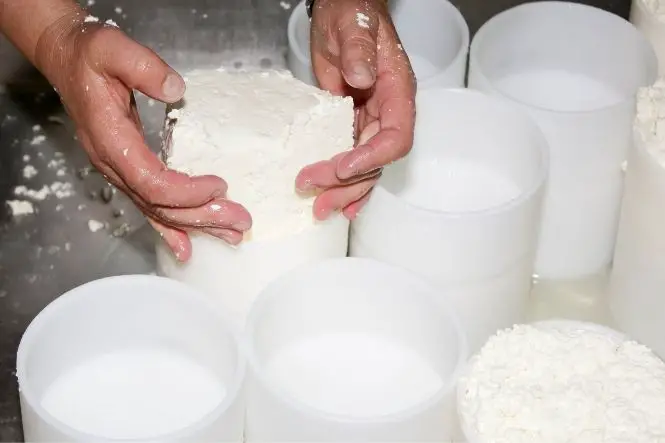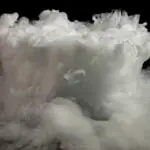Cheese is made from milk. This is most often cows’ milk, but it can be made from milk from sheep, buffaloes and goats – even yaks. It can be soft or hard, and high or low in fat. Cheese making may have started around 6000 or 7000 years ago, or even as long at 10,000 years ago, and it is an excellent way of carrying and storing milk without it going off (imagine trying to store milk in hot weather without a fridge). Cheese tastes good (especially on toast) and is a good part of a balanced diet as it is high in protein and calcium, though it can be high in saturated fat.
The Science of Cheese
First, the milk must be made slightly acidic, and this uses bacteria. Some cheese is made from unpasteurised milk (milk that has not been heat-treated) and so naturally contains bacteria. If the milk is pasteurised, the cheese makers must add cultures of bacteria to the curds. The different bacteria affect the taste, texture and colour of the cheese – for example, some Swiss cheese include bacteria that give off gas, and this creates the holes in the cheese.
In the next step, the cheese makers use rennet, which is an enzyme from the stomach of a young animal, often a calf, to curdle the acidified milk. This happens when a type of protein, called casein, tangles together, and the tangles trap fat and some water, forming curds (rubbery creamy white solids) and whey (a thin, straw coloured fluid). It is possible that cheese making actually started when someone stored milk in a bag made from the stomach of an animal, and noticed that it became solid. Rennet can also be made from plants or bacteria, making the resulting cheese suitable for vegetarians.
The cheese makers break up the curds and drain away the whey – the whey is low in fat and high in protein is often used in food production. Added salt helps draw more of the water out of the curds and helps reduce the risk of harmful bacteria. The curds are put into moulds – the amount of water in the curds at this stage affects how soft or hard the cheese will be. To make blue cheeses, such as Stilton or Roquefort, cheese makers add moulds (fungi) at this stage.
Some of the softer cheeses are eaten relatively young, such as Brie. These have fine white mould on the surface, which breaks down the casein molecules and makes the cheese runny and tasty.
Some of the hard cheeses age for a year or more, and the proteins begin to break down, making the flavour stronger – for example, mature Cheddar has a stronger flavour than young Cheddar. The moulds in blue cheeses also break down the fats, changing the flavour even further.
Making Cheese
It is possible to make a simple cheese at home, using an acid to coagulate the milk. The curds aren’t as solid as those made using rennet, and the result is closer to cottage cheese.
Heat up two pints of skimmed milk (not UHT or homogenised) on the cooker until it is hot but not quite boiling. Turn off the heat and let it cool for a couple of minutes. Stir in two tablespoons of lemon juice and watch the curds and whey separate – if the curds don’t separate, try adding a little more lemon juice. Let it cool and then pour it through a sieve to drain off the whey (this can be used in cooking). Enjoy the cottage cheese for lunch!




